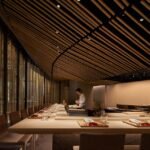[ad_1]
The SQ Batik Wall in Singapore Changi Airport’s Terminal 3 is becoming one of the most popular selfie spots these days.
And with the rising number of travellers passing through Changi Airport for work or leisure trips – there were 8.9-million passengers in the first six months of 2022, or almost 10 times more than the previous period – this stunning façade is winning more and more fans who are no doubt intrigued by its exquisite, handcrafted glass flowers that are inspired by the Singapore Airlines Batik Motif.
Located within the departure transit area, to view this masterpiece in all its glory one should first clear immigration, before heading to the A1-A8 cluster gate and taking the escalator to the second floor.
Unveiled to the public in June 2022 after two-and-a-half years in the making, the SQ Batik Wall features glass flowers that are lit from inside, with each individual piece being one of a kind and assembled by hand. Here, we reveal the creative process behind the making of the SQ Batik Wall.
1. What is the SQ Batik Wall about?
The wall facade features 105 glass flowers and leaves. These flowers can be found in the current iteration of SIA’s Batik Motif, which features native flora from Singapore as a nod to the country’s status as a garden city. The rich art of batik has long been a source of inspiration for SIA, beginning in 1968 when it was first incorporated into the design of the Singapore Girl’s sarong kebaya uniform.
2. Who made this artwork?
The creative team behind this glass floral sculpture was led by award-winning Australian glass artist Barbara Jane Cowie, a Singapore resident since 2003. When not busy glass blowing, Cowie holds workshops at her Refind Studio within The Yards in Joo Chiat Place, Katong, in the eastern side of Singapore. She is also a KrisFlyer member and has always flown with Singapore Airlines – making this an incredibly special and uniquely challenging project for her.
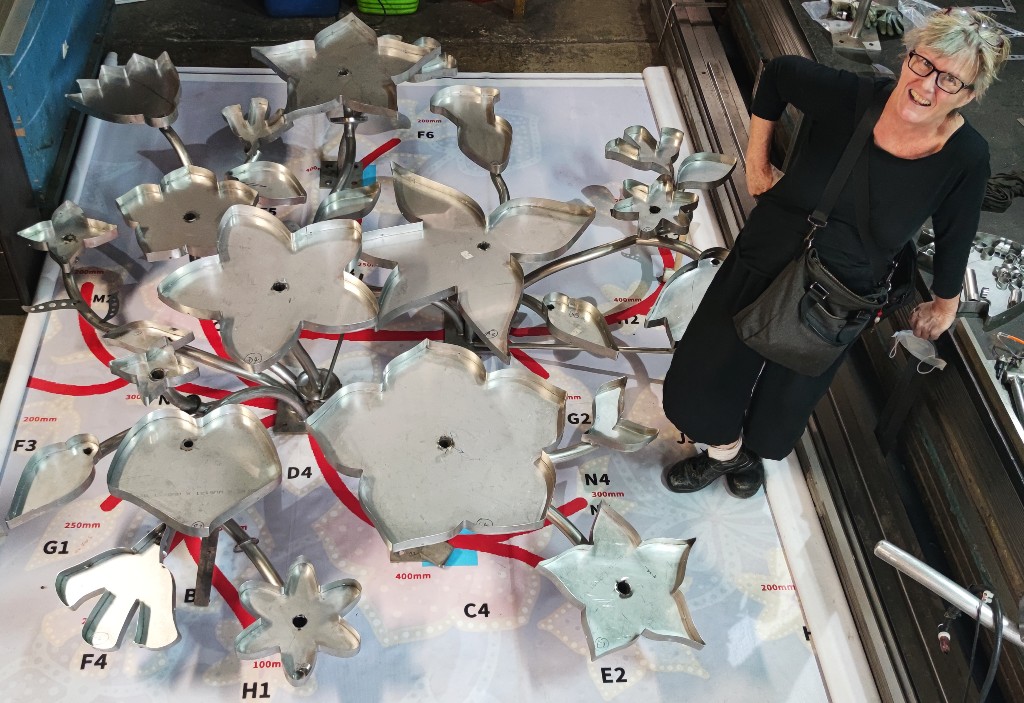
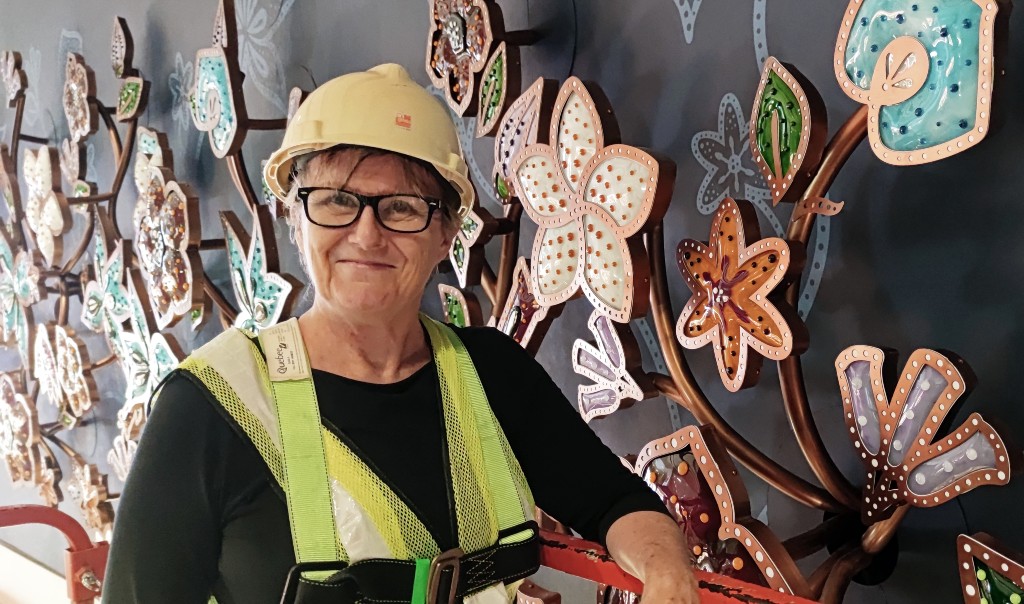
3. What can we see in this work?
The glass sculpture looks as if it is floating from a curved metal wall that has been painted in SIA’s iconic blue. Eight branch clusters showcase 12 types of flowers that are native to Singapore, in different sizes and shapes, and surrounded by leaves. The wall is about 13m wide (almost the tail height of a Boeing 777) and 3.7m high, and weighs just under a tonne (similar to a grand piano).
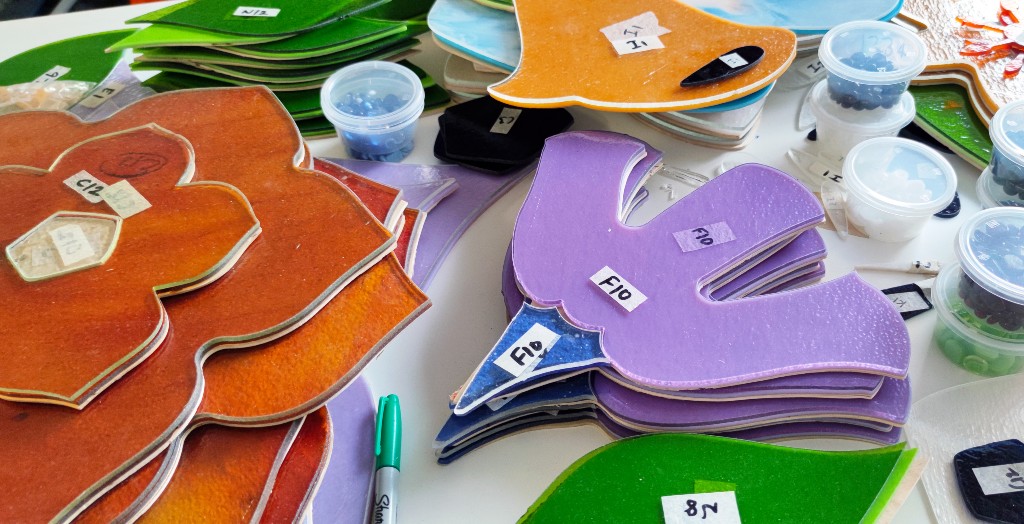

4. How do we identify the flowers?
If you go by quantity, the easiest to spot among the featured flowers is the Lipstick Plant (Aeschynanthus parvifolius), as there are 13 of them in varying sizes. If you go by colour, perhaps the Seashore Purlane (Portulaca pilosa) is most striking because its five dark-red sepals (petal-like formations) are large and a stark contrast to the blue background; there are nine of these. If you want a challenge, try to look for the Malayan Ixora (Ixora congesta) with four petals – there are eight of them. For this project, the artist Cowie spent plenty of time in nature, studying the foliage and flora.
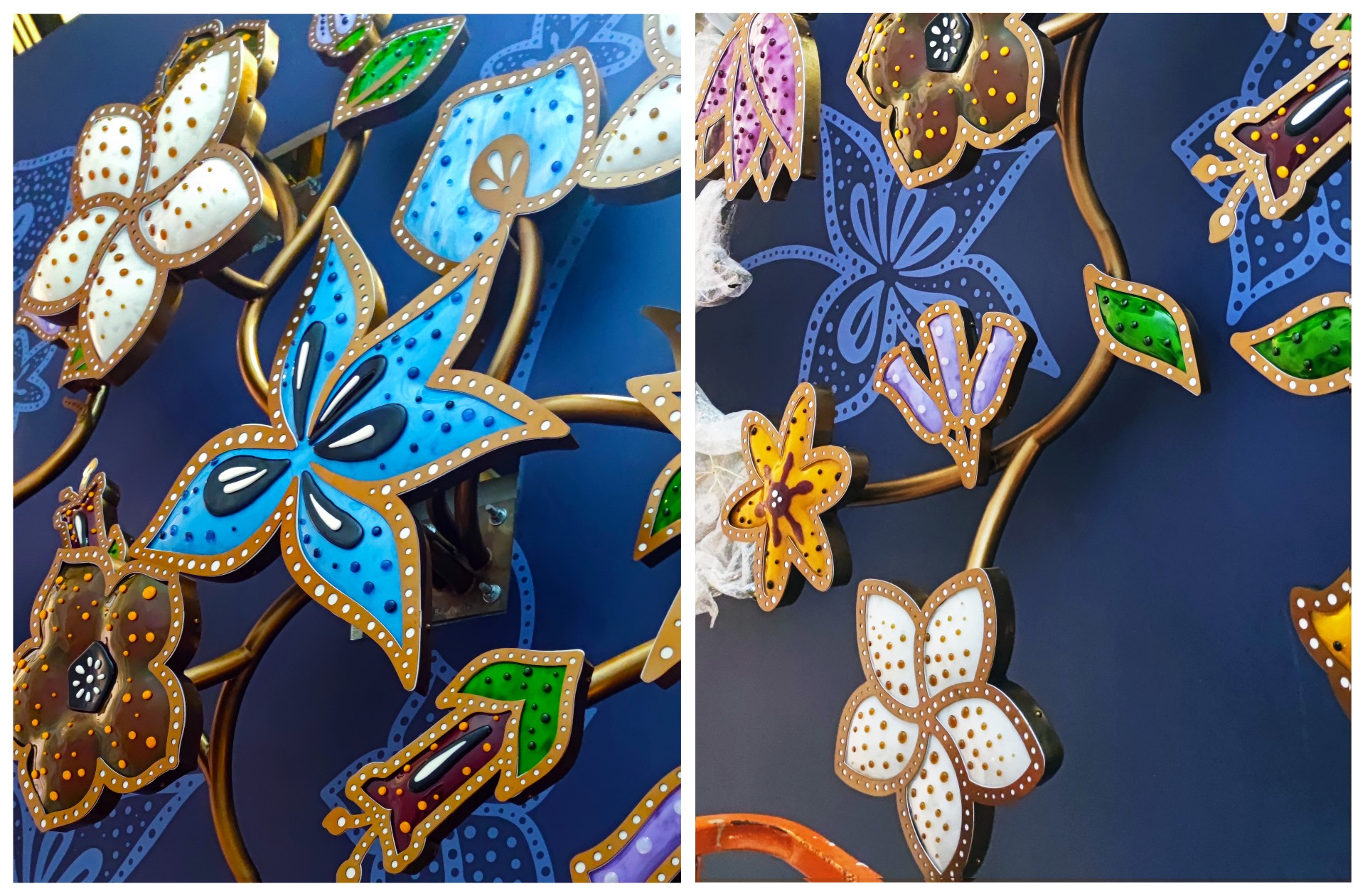
5. What else makes up SQBatikWall?
Apart from glass, the floral sculpture uses metal for the canvas and branches, and LED lighting to illuminate the flowers. All the metal components were laser-cut to be the exact size. Once the pieces were cut, they were hand curved to form the branches. The metal boxes that contain the light and the glass flowers were formed by hand. Since the artist wanted the sculpture to look like it was floating in mid-air and did not want to see big bolts, glue or exposed wires, she used fixtures and fittings that were designed and made specially for the project.
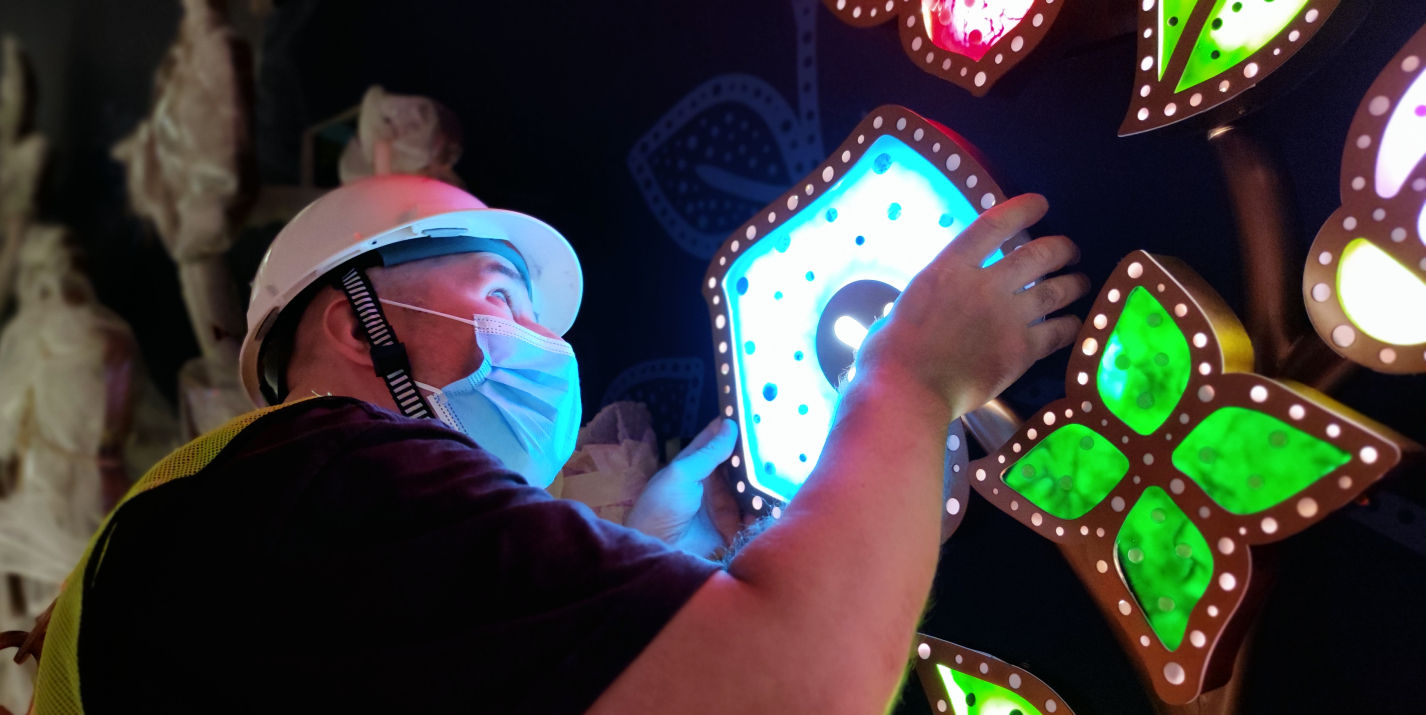
6. How long did it take to finish the work?
This was a two-and-a-half year adventure for the artist Cowie: a year-and-a-half devoted to researching, sampling and developing ideas; and another year to making the glass sculptures, with at least 100 kiln firings to get the colours right and create the initial prototypes.
The artist was given a design based on SIA’s Batik Motif and tasked to faithfully reproduce this 2D design into a three-dimensional glass sculpture. Cowie spent 120 days nonstop to make the glass flowers (not one of them is the same); firing the kiln for 20 hours each day – each kiln firing taking about three to five hours to prepare and load – and doing it all over again if the piece is not perfect. With a small team of roughly 15 people to complete the project, Cowie believes that the number of people involved is not important, as long as they are passionate and committed to the craft and prepared to do their best to create the artwork.
Once all the moveable parts were ready, it took two months to complete the wiring, 15 hours to mount the branches, another six weeks to install the glass flowers, leaves and LED light panels. Installation at Changi Airport began in February 2022 and it was unveiled to the public in June, now seen as one of the most popular spots for selfie shots.
[ad_2]









